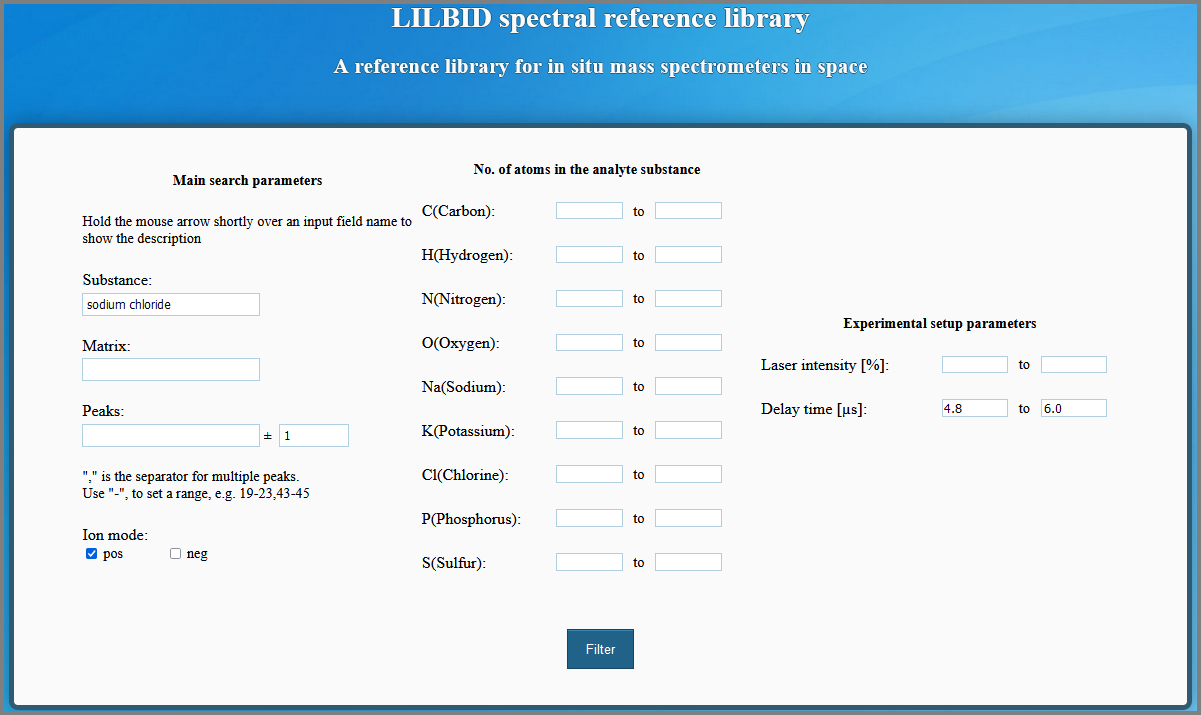Department of Earth Sciences
Service Navigation
Spectral reference library for future space missions
Mass spectra produced at our experimental facility are crucial for the compositional analysis of ice grains detected in space. With the first laboratory spectra recorded in 2012, the facility has been running for over 7 years, generating approximately 10.000 mass spectra. The huge range of mass spectra encompasses different analogue materials for icy grains as well as variations in instrument parameters that can be adjusted individually for each measurement. To facilitate the easy searching, access and extraction of spectra from this large and growing library, an internally accessible database (spectral reference library, Figure 1, 2) containing all recorded spectra has been created. The database enables selection of individual measurements not only by the chemical substance used and different experimental parameters, but also by individual mass lines (peaks) appearing in the mass spectra. It contains the originally recorded mass spectra files as well as the corresponding spectral images. All spectra obtained in the facility in the future will be incorporated into the database.
This relational database is based on Structured Query Language (SQL). Hypertext Markup Language (HTML), Cascading Style Sheets (CSS), and Hypertext Preprocessor (PHP) were used to create a graphical layout (interface). Scripts to clean the data and add them into the database are written in Python.
The database expedites the investigation of impact ionization mass spectra. It is an important resource not only for the analysis of data from now finished space missions (e.g. Cassini) but also for data from future space missions which will record impact ionization mass spectra (e.g. Europa Clipper). The database will be improved continually, adding more functions, filter options and an improved peak detection algorithm to further ease and support the spectral analysis of impact ionization mass spectra from space. We are currently developing an easy-to-use graphical interface that will allow access to the database by a wide community.

Figure 1: Search interface of the laboratory spectral reference library (Image Credit: Klenner et al., 2022).

Figure 2: Result interface of the laboratory spectral reference library (Image Credit: Klenner et al., 2022).